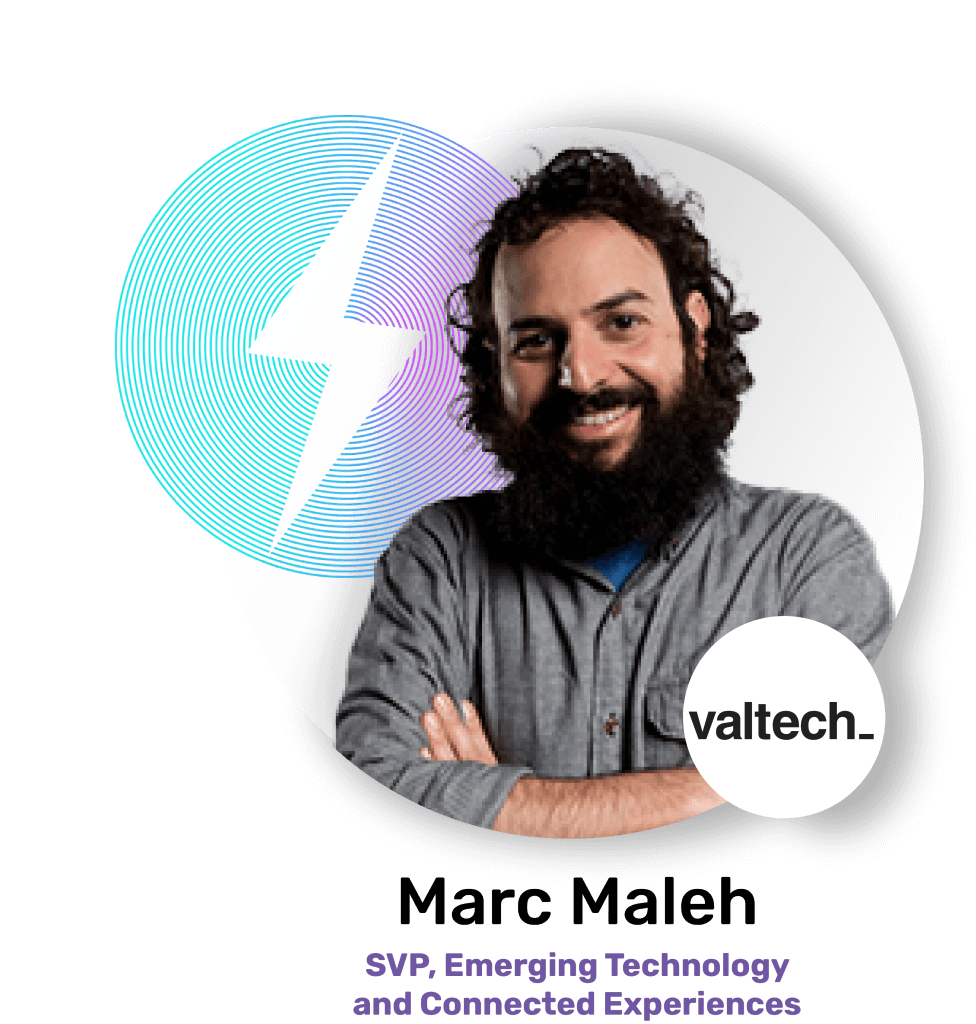In today’s world, technology is a big influence on brands. Innovation is vital for brands to remain relevant for the NOW gen consumer. In this episode, we will discuss emerging technology’s impact on the retail industry and e-commerce platforms. Brands are constantly looking for ways to improve their customer’s experience, and including the newest technologies might seem like the way to go. Our guest Marc Maleh, the SVP of Emerging Technology and Connected Experiences at Valtech Commerce, shares his take on this topic with us. Tune in to listen to what our guest has to say about implementing technology into your brand’s strategy to create connected experiences.

Guest
Marc Maleh
KEY POINTS:
- Marc’s experience and career journey
- Technology as an enabler of human connection
- Emerging technology and how to incorporate it into your business
- Connected experiences between the digital and physical world
- Learning from the consumer journey
- E-commerce and its influence on the physical retail area
RELEVANT QUOTES:
“I get to bring a lot of those things together. I get to kind of bring the emerging technology side and kind of the evangelizing of those types of tools, but also humanizing them in a good story.”
“I believe technology is just an enabler of human connections when done well. And that’s the type of mentality and insight that I try to bring to my clients and frankly, our teams here at Valtech, whether they’re a designer or whether they’re an engineer.”
“When it comes to these emerging technologies is not always just jump in and go do it. A lot of times it’s actually slow down, pump the brakes, let’s take a minute to see whether or not this technology is even relevant for your brand.”
“Using artificial intelligence as an example, everybody is talking about it, everybody’s trying to find ways to utilize it. But to a degree a lot of the big brands out there are still just trying to figure out like, what’s their stance on it? , and I think that’s actually the best way to kind of pursue is not just jump in.”
“Yeah, so connected experiences is primarily the work that we do at the intersection of the physical world and the digital. So whether that’s how technology and user journeys are showing up in, say, a retail space or with some of the work that we do for theme parks as example. and a lot of times what we’re finding is those, those things come closer and closer together in the way that we think about that type of work.”
“Connected experiences is just kind of a terminology out there that kind of is encompassing, of the digital and physical environments.”
“I think a lot of these experiences, whether it’s in kind of the theme park world or whether it’s in the retail world, this idea of a value exchange between the consumer and the brand and the data that you can collect throughout all of those different touchpoints, right?”
“So if we know that a consumer is interested in a certain service prior to them going to a physical retail store and they execute on those things in the retail store, but they ended up buying maybe different products, those are all breadcrumbs. Those are all data points.”
“We were seeing a massive trend in e-com, and obviously during Covid when everything was closed, huge uplift in, in kind of e-com and a necessity for direct to consumer brands to kind of go hard in that direction.”
“I think some of the challenges that generally people or brands are kind of facing right now is like with economic uncertainty, is how can we be efficient with assets that we actually already have?”
“How can we leverage those things to create new experiences on top of assets that they already have as opposed to maybe always feeling like you have to create net new assets or net new experiences?”
“I think the challenge is a little bit around efficiency, which sometimes goes against the idea of innovation and innovating in a certain space, but actually sometimes actually can be a good catalyst for it.”
“When you have to be more efficient, you actually can drive more innovation because it’s a constraint that you have to work within.”
“ So, I think the challenges that we see economically are not necessarily gonna shut down a brand’s ability to innovate, but I think they’re at least gonna give us some constraints and that probably is gonna be one of the challenges.”
”There’s a balance to that, which is actually getting people outside and getting people to do some research and do some understanding about what they actually want.”
“And I think, there’s, in my mind, even a sustainability side of that is, yeah, I can have something instantly here, but like, is it the best thing for me? Is it the best thing for the environment? What’s it actually gonna do?”
“I would say most things, you don’t need instant gratification, right? You don’t need it now. I think there’s also geographically, I would say different mentalities when it comes to those things.”
“I think your personal health data to a degree is something that I think a lot of people still want to really retain within a certain bubble. Granted things like Strava for health tracking, the Nike ecosystem for health tracking. but I’m opting in to do those things.”
“And that’s the fertile territory, I think for many brands. And they haven’t necessarily not all of ’em have fully leveraged this. I mean, the holy grail to a degree is figuring out how do you bring the technology and the personalization and the, the, the call it efficiencies of e-commerce and the internet into a physical world.”
“Because of, your mobile device being essentially tied to you at all times, there are ways, right? And there are ways that you can develop, de deliver unique experiences that, that are personalized to consumers in the physical world.”
“And so I think we’re slowly starting to get to a place where the physical world can mimic some of what’s happening on the digital world and on an e-com perspective.”
“And again, technology doesn’t always have to be in your face. technology can be something that is actually, transparent and something that actually is there to utilize And actually engage you with another humanas opposed to just be like, I’m engaging with this technology to go engage with another technology. cuz human to human contact I think is still a very, very important thing.”
“The first biggest step is truly to get an understanding of who your consumers actually are. I think that’s something that I think a lot of brands actually they think they know who their consumers are, and they think they know who’s spending money with the brand. but when you actually dig into some of the personas and you actually study their path to purchase, whether it’s on e-com or whether it’s in the physical world, a lot of brands, their eyes open up.”
“If you don’t have an understanding of who your target and who your consumers are, it doesn’t really matter what other user journeys you come up with or whatever, you know the technology you wanna recommend because you, the foundation of what you’re trying to do is just not sound right. You’re not on good footing. So I would say understanding who your actual consumer is, is step one and really, really, really important.”
“What’s the problem you’re trying to solve? And like, we’ll come back to you and like, if you’re interested in augmented reality, we’ll use as a lens, but don’t just tell me you need augmented reality. Help me solve what your business problem is and help me solve what maybe the usability problem is that you think augmented reality can help solve.”
“Make sure that the way you’re thinking about involving technology across e-com and physical footprints, make sure it’s cohesive and actually is very clearly positioned within your brand voice.”
“Making sure that your brand is kind of the first thing you’re thinking about and frankly, protecting in the way that you think about a consumer and all of their touchpoints across physical and across digital.”
“From kind of a brand perspective I would say if you’re, in kind of the consulting world or in the agency world I think it’s a little more about being conscious about the technologies that you are recommending to your clients and thinking about the impact that those technologies have on the brand and on the overall experiences that the consumers will have with the brand.”

